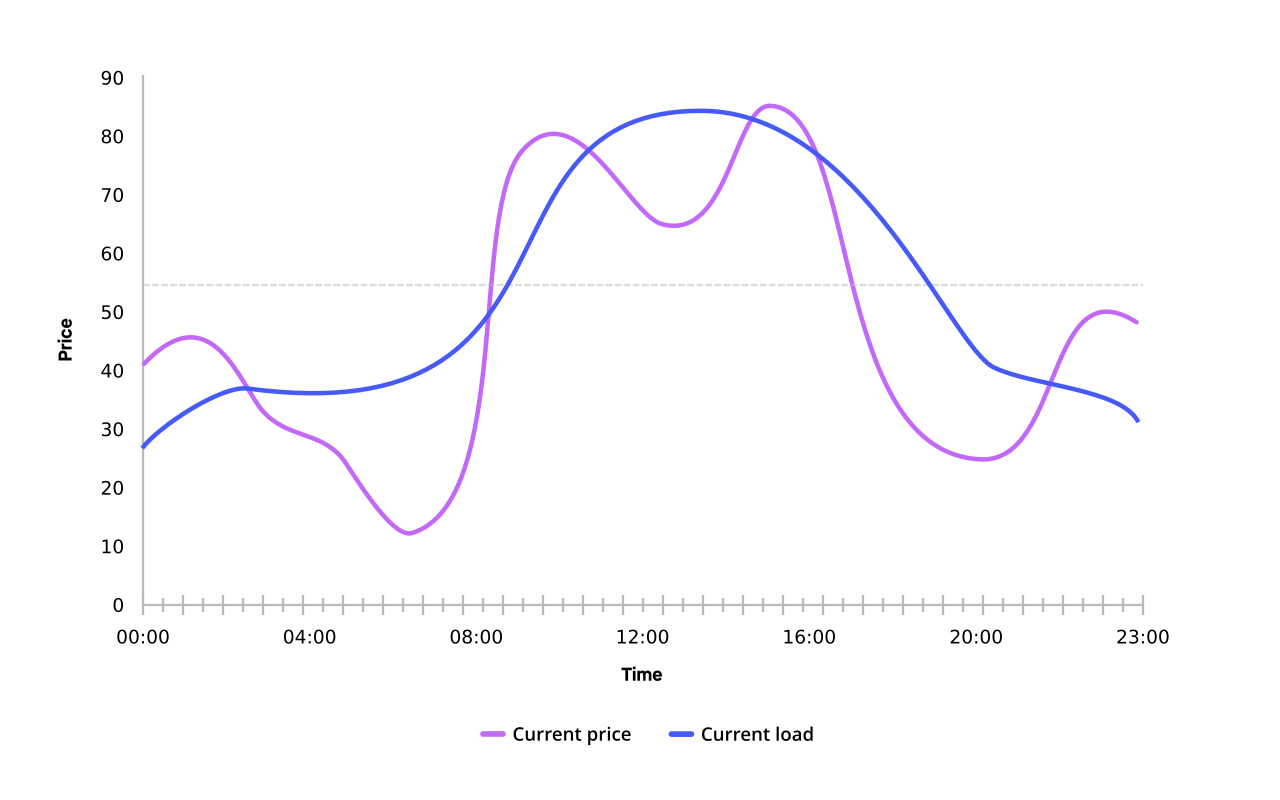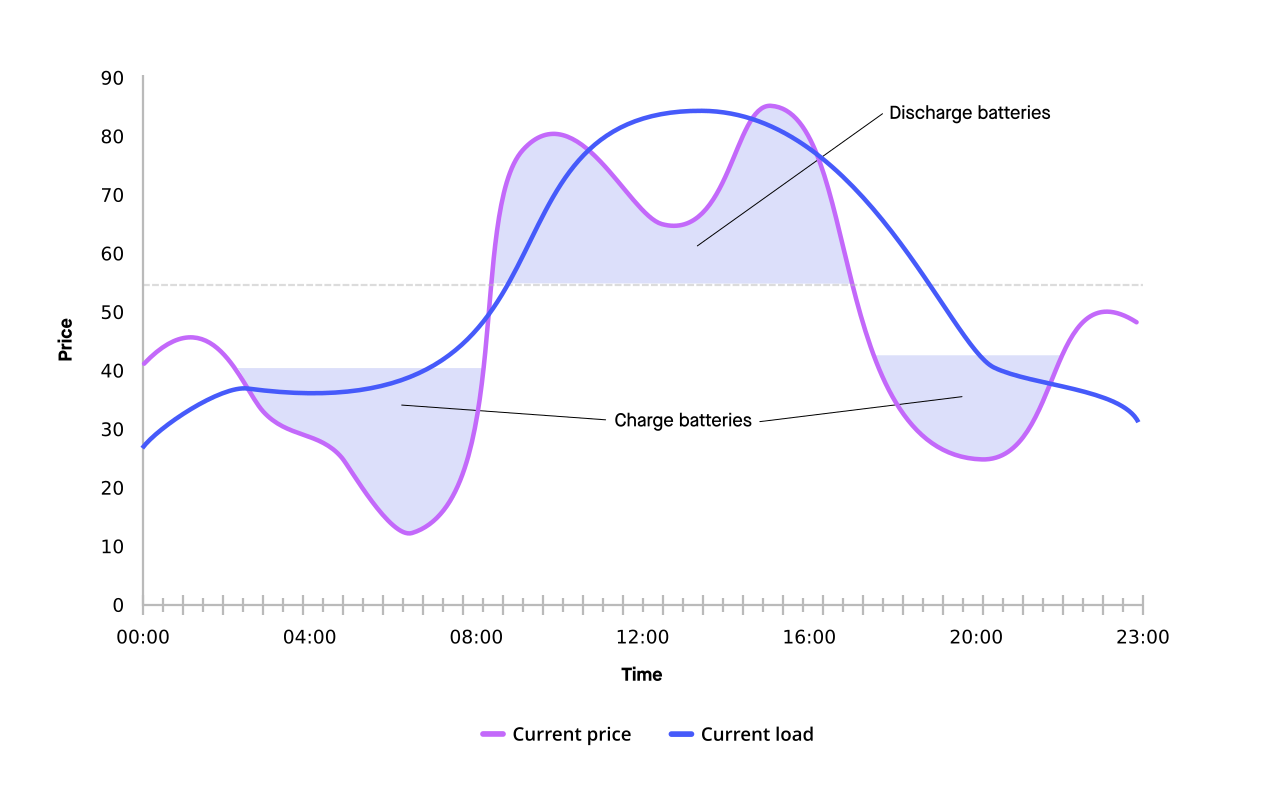
Introduction
Customers with high energy requirements are often susceptible to demand tariffs. These tariffs exist to incentivize the customers to reduce consumption during peak demand times when the pressure on the power grid is high.
This article describes two common strategies that can be used avoid these peak demand charges: Load shifting and Peak shaving.
Load shifting
Energy is typically more expensive during peak energy demand hours. Load shifting is an energy management strategy used to shift load to a more optimal time. It is usually done by turning equipment off during peak demand hours, and turning it back on when the overall energy demand is lower.
In the example below the equipment is running during peak demand:

If some of the equipment is shifted to run during off-peak hours instead of when the demand is high we can even out the load avoid the peak altogether:

Peak shaving / Load shedding
Peak shaving is similar to Load shifting in its goal, but instead of turning equipment off during peak hours, the peaks are avoided by switching to an on-site energy source (e.g. batteries, solar power, generators) when the overall demand is high.
In the example below batteries are charged during off-peak hours and discharged to mitigate the peak when demand is high:

